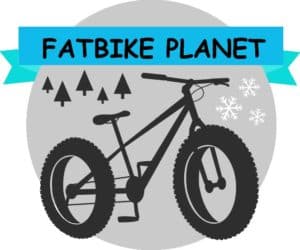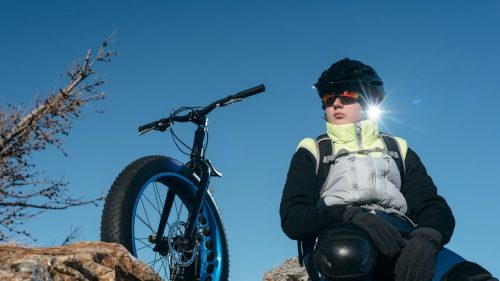Fat biking has turned into more than just an activity for adults to explore different trails. More and more people are making a family activity, and that means finding the best place for kids.
A kid can obviously benefit greatly from a bike that is designed for a person smaller in stature. Trying to stretch out on a big bike is just asking for trouble. Not only does it make things harder for the rider, but it could end up putting a child at a pretty big risk of injury if they hit a rough patch.
What are the best options out there right now for the next generation? Here is a closer look at the best options for parents looking to get their children into the joys of fat bike riding.
1. Specialized Kids Fatboy

Most people are pretty well aware of the Fatboy option from Specialized, so the kids’ version is definitely worth it to check out. They sell both a 20-inch and a 24-inch version, so children of any size can get the exact type of bike they need.
The features on the bike are pretty impressive for something that runs at around $770. The Tektro brakes are outstanding, and one of the safest options out there on any bike made for children.
The rims are very sturdy as well, as the 90 mm Specialized branded rims are the strongest options available for kids at this time. They will be able to hold up over the entire stretch of use for this bike.
Specialized even did a great job in making sure that there are little features that add stability and safety for children at all times. The handlebar grips are great so that kids always have the right type at all times. They can easily be adjusted so that when they grow, the handlebars grow with them.
Pros
- Very similar to the adult Fatboy option.
- Excellent rims.
- Great grip.
Cons
- Mostly sold at Specialized sites and stores only.
- Buying a 20″ and 24″ version adds up.
2. Diamondback El Oso Nino
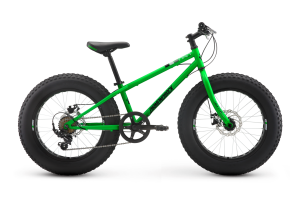
The smaller version of the El Oso Grande, El Oso Nino has just about everything the bigger version has. It is a very affordable fat bike for children, coming through with a cool look. That will make kids feel like they are riding a really special bike instead of something that is dumbed down too much.
Some of the biggest selling features with this bike is the fact that it comes with mechanical disc breaks and a Shimano drivetrain. It is a very affordable option that keeps kids safe and can be tailored so that maximal riding speeds are obtainable. There might be some tweaks needed as the child grows, but all in all, it is worthy of the investment.
Pros
- Looks and feels like the adult version.
- Very sturdy.
- Mechanical disc brakes are safe.
Cons
- Hard to find availability at times.
- Does not offer a 24-inch model at this time.
3. Trek Roscoe Mid Fat
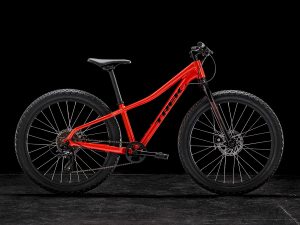
After the discontinuation of the Trek Farley 24, the Trek Roscoe 24 have been very popular since they released, and they now make choices for smaller riders. This is great for kids who want a hardtail option that makes riding as fun as possible.
Inexperienced riders are generally at more risk, as they have not been able to make adjustments just yet. They try to do whatever possible to stay on the bike and ride at a high-level, but sometimes it can be a challenge.
The Roscoe is another one of those models that can easily allow a person to go from riding as a child, to riding as an adult. They are very affordable options that do not get above $2000 in the adult models. Getting very used to the whole layout of the bike is something that a lot of people can get behind.
Pros
- Extra grippy tires for solid riding on all surfaces.
- Some riders prefer a more hardtail option.
- Shares a lot of similar qualities to the adult version.
Cons
- A little expensive due to brand-name.
- Tough at times to make minor adjustments for sizing.
4. Framed Mini-Sota
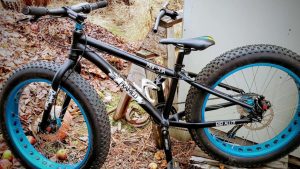
Take a look around fat bikes long enough, and there is no doubt that the Framed Minnesota will pop up. It is one of the most popular all around that bike options available, so it should come as no surprise that they have one specifically for younger children. The 24-inch fat bike has a lot of high-quality components that people are used to seeing on all the bikes from this line as well.
The company understands that people want to keep the young ones as safe as possible, so the 4-inch wide tires provide amazing stability on most surfaces. These do particularly well in harsh snowy and icy conditions. The disc brakes work extremely well, and it is a very no-nonsense bike that needs very little maintenance.
It is about as easy of a bike to learn on and use consistently without fearing any major issue. The three-year warranty comes in handy if a child is a little bit rough with everything.
Pros
- Trusted company.
- Simple design.
- 3-year warranty.
Cons
- Might be too much bike for new riders.
- Upgrades can make it pricy.
5. Mongoose Logan
Not everyone is a fan of Mongoose, mostly because they are very inexpensive options that might not bring the same level of components to the table. However, for a child learning, a 20-inch option built for kids might be exactly what they need. It is the most affordable bike option to make this list, and a perfect first bike for many kids.
Think of this as a fat bike that works well for shorter rides. It can be a lot of fun for kids to learn either on trails, riding on the beach, or just about anywhere else.
Some parents will even buy this bike as a replacement for traditional dirt bikes given to a child, and learning on this bike certainly allows for a bit more freedom.
There is not too much to this fat bike, as it comes with pretty basic parts and components. None of the components are as high-quality as the ones above, but they still should last pretty long with minimal maintenance.
Do not be afraid to upgrade the tires since they do not seem like they are holding up after extended use. It is better to spend a little bit more on upgraded tires than to risk potential injury with a child by letting them smooth out.
Pros
- Very inexpensive.
- Perfect starter bike.
- Wide, sturdy tires.
Cons
- Components do not last that long.
- Build quality is not the best.
Tips on Choosing a Fat Bike for a Child
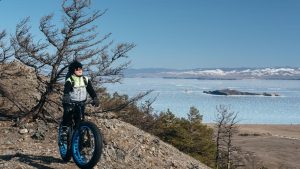
Before putting money down on a fat bike, it is important to know how to shop properly for a child. The buying tips below are just a few of the major things everyone should consider. After narrowing some choices down, that is when it is time to start looking at prices, bonus features, and more.
Size
There are two common sizes for children wanting to learn how to ride a fat bike. The 20-inch wheel size is recommended for children ages 6 to 9 years old, and roughly 4’0″ to about 4’5″ tall. If they are close to the higher end, it is usually better off to jump up to the bigger size since they will probably grow soon.
The 24-inch size is really considered to be the last fat bike option for a child before they graduate to an adult size. Anyone who is around 8 to 11 years old, and 4’6″ to about 4’10” can benefit from a bike this size.
Weight
Fat bikes are the heaviest options out there, so do not overwhelm a child with something that is too much to handle. Companies do a pretty good job of reducing weight as much as possible, but it is always going to be a little more expensive to get quality components that are lightweight enough.
The heavier the bike gets, the harder it is to control. Kids can get discouraged pretty quickly if they do not know how to handle a bike that seems to be taking too much control.
Brakes
Quality brakes are important with any bike designed for a child. Fat biking is a dangerous sport, especially if there are a lot of tricky parts in the trail. Do not skimp on brakes that are less than high-quality, or it will be a really tough ride worrying about any mishaps with the child.
Components
Much like an adult bike, components are going to dictate the price quite a bit. Higher quality components usually make the bike more lightweight, and add general life to the bike as well. On one hand, it makes sense to invest in a bike with high quality components, but at the same time, this bike only has a relatively short shelflife before a child outgrows it.
Ultimately, most people try to buy a quality option for their child, and then sell it off when they grow out of it. That can help pay for the next fat bike purchased.
